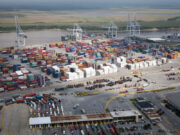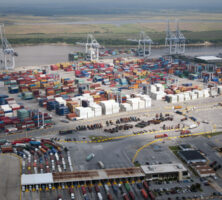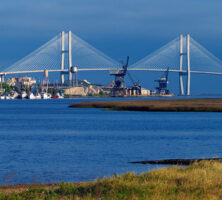The purpose of the Georgia Ports Authority (GPA), according to the agency’s mission statement, is “to develop, maintain, and operate ocean and inland river ports within Georgia; foster international trade and new industry for state and local communities; promote Georgia’s agricultural, industrial, and natural resources; and maintain the natural quality of the environment.”
The GPA was created in 1945 by an act of the Georgia legislature in response to the post–World War II (1941-45) economic boom. The state’s two deepwater ports, Savannah and Brunswick, had a long history of trade and commerce, but the creation of the GPA marked the beginning of their development by an official state agency.
The GPA is governed by a board of directors consisting of thirteen members appointed by the governor for four-year staggered terms. Members are appointed from throughout the state and meet bi-monthly. Administrative offices are located in Savannah.
In 2021 the port of Savannah was the third busiest container port in the United States, serving roughly 36 vessels per week and averaging 14,000 truck moves per day. Overall, Georgia’s ports and inland terminals employ more than 496,000 people and generate $122 billion in revenue and $3.4 billion in taxes.
Savannah Facilities
In Savannah the GPA owns and operates the Garden City Terminal, which the GPA acquired in 1948 by purchasing the former U.S. Quartermaster Depot. It is now a major container-operations facility. Ocean Terminal, also in Savannah, was purchased from the Central of Georgia Railway in 1958. It is primarily a roll-on/roll-off (automobiles and wheeled equipment) terminal, although it also handles breakbulk and project cargo. Once unloaded, goods travel across Georgia by way of Georgia’s interstate highway system.
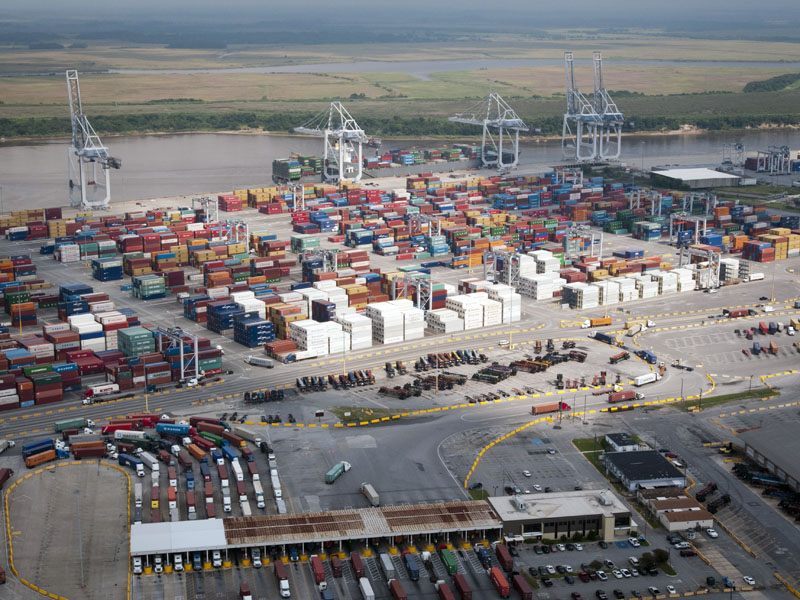
In 2002 archeologists hired by the GPA discovered important colonial-era remains on the site of a planned expansion of the Savannah River facilities. The site, about four miles upriver from Savannah, was the location of a trading post established in 1732 by Mary Musgrove, a member of the Creek Nation who played a crucial role in cultivating relations between indigenous peoples and white settlers. Archeological fieldwork, conducted before the GPA began grading the site for a new container berth, produced thousands of artifacts from the prehistoric period to the mid-1800s.
Brunswick Facilities
The GPA’s Brunswick facilities include three deepwater terminals: Mayor’s Point Terminal, Colonel’s Island Terminal, and East River Terminal. Mayor’s Point Terminal is a general cargo site built by the GPA beginning in 1959 on land donated by the city of Brunswick and Glynn County. The authority bought Colonel’s Island near Brunswick in 1962 and developed a terminal to handle dry bulk commodities. Colonel’s Island Terminal is especially noted for its export and import shipments of automobiles. The GPA built East River Terminal on property acquired in the area of the old city dock in 1982. Owned by the GPA, this bulk and general cargo facility is operated by a private company. In 2021 the U.S. Department of Transportation appropriated $14.6 million in federal aid to expand and support the Brunswick facilities.
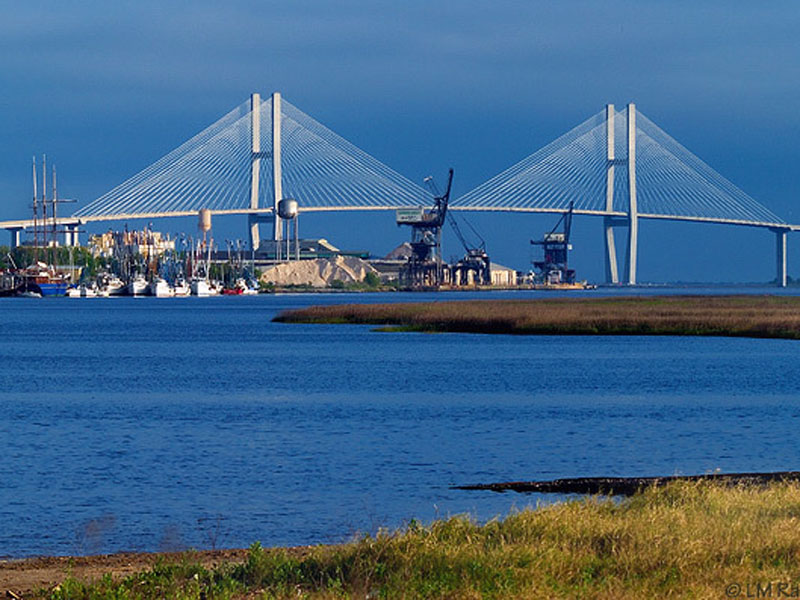
River Transportation
The GPA supports development of river transportation in the western part of the state through its barge facilities located at Bainbridge and Columbus. The Bainbridge Inland Barge Terminal, owned and operated by the GPA, is located on the Flint River. The confluence of the Flint and Chattahoochee rivers forms the Apalachicola, which flows to the Gulf of Mexico. Construction of the Bainbridge terminal began in 1957 on land deeded to the authority by the state. Liquid and dry bulk commodities pass through this site.
Farther up the Chattahoochee River in Columbus, the GPA built the Columbus Inland Barge Terminal on land deeded by the city of Columbus in 1961. Owned by the GPA, this terminal is operated by a private company. Liquid bulk commodities, such as petroleum products, petrochemicals, and crude oil, are handled there.


